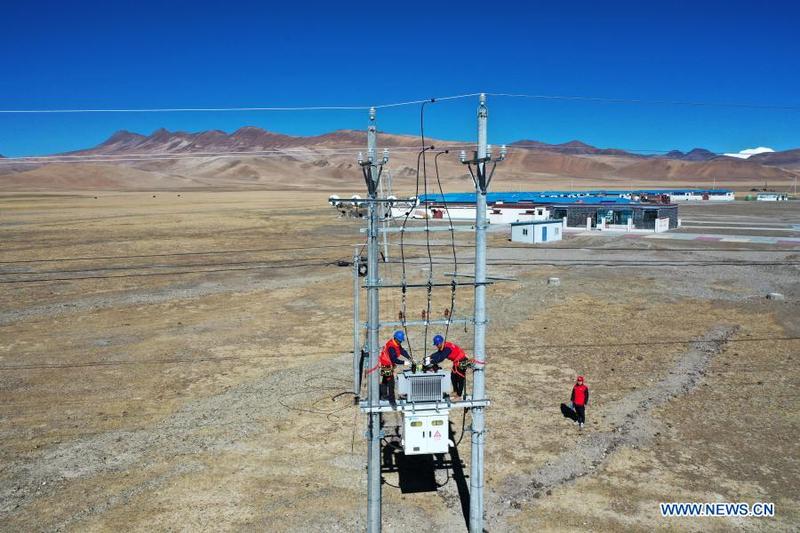
Aerial photo taken on Nov. 5, 2020 shows workers examining power supply equipment in Pumaqangtang Township of Nagarze County in Shannan, southwest China's Tibet Autonomous Region. Pumaqangtang, China's highest township, has an average altitude of 5,373 meters, with oxygen levels less than 40 percent of that at sea level. Villagers here used to live in earth-rock houses with no electricity, running water, vegetables or fruits available. Such hard living conditions continued until the 1970s. Nowadays, all villagers in Pumaqangtang have moved into better residences. Compared with the past, the new brick-concrete structure houses are stronger, warmer and more spacious. Every household has access to electricity and water supplies, and has their own small courtyard and toilet. All villages in the township have kindergartens, clinics, oxygen chambers and other facilities. The enrollment rate of school-age children and the retention rate of primary school students both reached 100 percent. Through the implementation of targeted strategies, the local government has developed specialized livestock industries to help increase the income of villagers. The annual per capita net income of the township reached 15,323 yuan (2,343 U.S. dollars) in 2019 and is expected to surpass 17,000 yuan (2,599 U.S. dollars) this year. Tibet has accomplished the historical feat of eradicating absolute poverty. By the end of 2019, Tibet had lifted 628,000 people out of poverty and delisted 74 county-level areas from the poverty list. (Xinhua/Zhan Yan)
